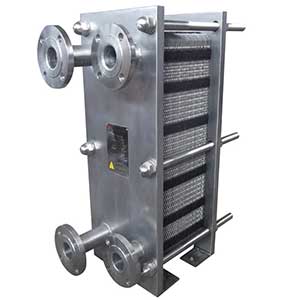All plate heat exchangers look similar on the outside. The difference lies on the inside, in the details of the plate design and the sealing technologies used. Hence, when evaluating a plate heat exchanger, it is very important not only to explore the details of the product being supplied but also to analyze the level of research and development carried out by the manufacturer and the post-commissioning service and spare parts availability.
An important aspect to take into account when evaluating a heat exchanger are the forms of corrugation within the heat exchanger. There are two types: intermating and chevron corrugations. In general, greater heat transfer enhancement is produced from chevrons for a given increase in pressure drop and are more commonly used than intermating corrugations.[2] There are so many different ways of modifications to increase heat exchangers efficiency that it is extremely doubtful that any of them will be supported by a commercial simulator. In addition, some proprietary data can never be released from the heat transfer enhancement manufacturers. However, it does not mean that any of the pre-measurements for emerging technology are not accomplish by the engineers. Context information on several different forms of changes to heat exchangers is given below. The main objective of having a cost benefit heat exchanger compared to the usage of a traditional heat exchanger must always be fulfilled by heat exchanger enhancement. Fouling capacity, reliability and safety are other considerations that should be tackled.
First is Periodic Cleaning. Periodic cleaning (on-site cleaning) is the most efficient method to flush out all the waste and dirt that over time decreases the efficiency of the heat exchanger. This approach requires both sides of the PHE (Plate Heat Exchanger) to be drained, followed by its isolation from the fluid in the system. From both sides, water should be flushed out until it runs completely clear. The flushing should be carried out in the opposite direction to regular operations for the best results. Once it is done, it is then time to use a circular pump and a solution tank to pass on a cleaning agent while ensuring that the agent is compatible with the PHE (Plate Heat Exchanger) gaskets and plates. Lastly, until the discharge stream runs clear, the system should be flushed with water again.
